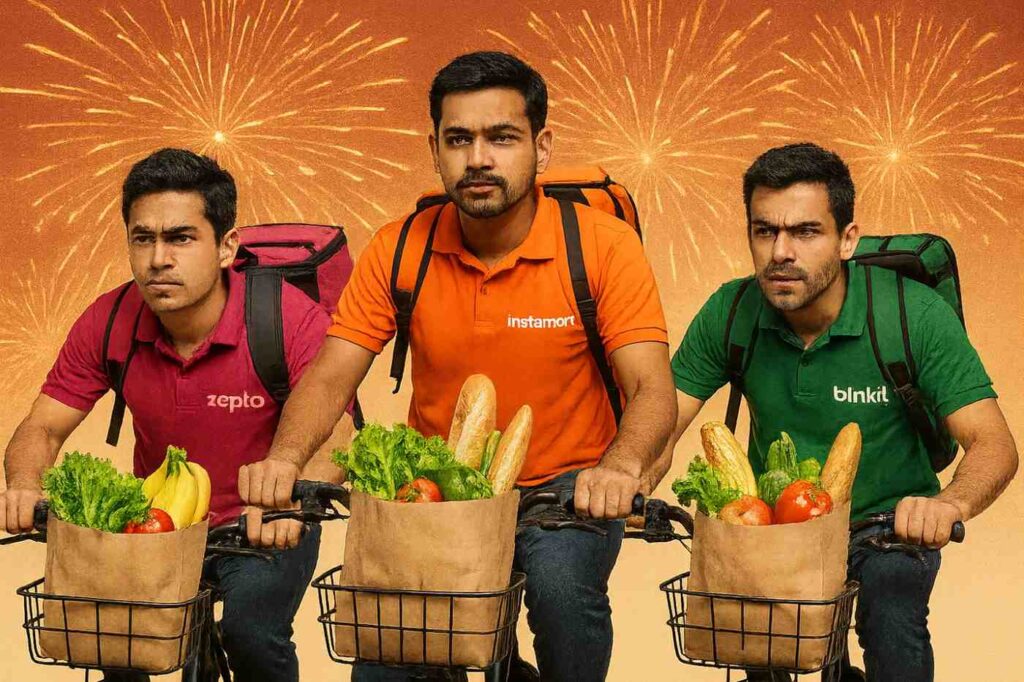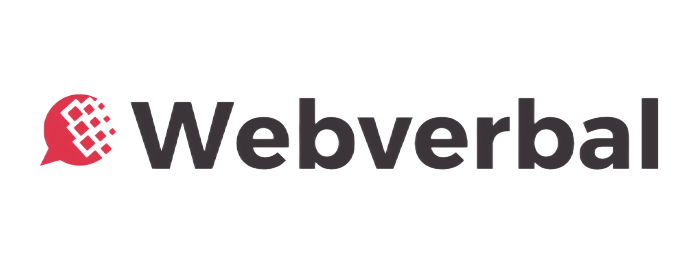Table Of Content
- When the River Changes Course, the Fish Must Learn a New Dance
- Market Context and Consumer Insights: The Season When Convenience Meets Celebration
- The Contestants: Profiles and Positioning in the Instant Grocery Arena
- The Diwali Playbook: Arrows in the Quiver
- Competitive Snapshot: The Numbers Behind the Race
- Predictions & Sentiment: Who Holds the Diwali Edge?
- Challenges & Opportunities: Beyond the Diwali Lights
- Conclusion: The River’s Journey is Long
- Frequently Asked Questions (FAQs)
- What can I find on Webverbal?
- How often is the content updated?
- Why choose Webverbal for information?
When the River Changes Course, the Fish Must Learn a New Dance
As an ancient Indian proverb wisely says, “When the river changes course, the fish must learn a new dance.” The world of grocery shopping in India is that river—ever shifting in rhythm and flow. This Diwali, the instant grocery delivery market races faster than ever as Zepto, Instamart, and Blinkit compete to win hearts and carts across urban and tier 2/3 India.
With over 11 years immersed in India’s e-commerce journey, mentoring startups and analyzing market trends, it’s clear that this battle isn’t just about speed or price. It’s about who understands the pulse of Indian shoppers—the need for convenience wrapped in trust, festivity, and local relevance.
Let’s dive into the story behind the race, the players fueling it, and what this festival season reveals about the future of instant commerce in India.
Market Context and Consumer Insights: The Season When Convenience Meets Celebration

India’s online grocery market is booming, valued at roughly $8.8 billion in 2024 and predicted to soar to over $77 billion by 2030. Instant grocery or quick commerce, offering deliveries within minutes, is the blazing fast current driving this growth with a staggering CAGR of 50-77% since 2021.
During Diwali, a festival wrapped in tradition and togetherness, the desire for quick and reliable access to sweets, decor, and essentials surges sharply. Tier 2 and 3 cities like Ludhiana, Bathinda, and Meerut have seen order volumes increase up to 18 times over average days, signaling a shift where convenience meets festivity in the heartland.
This evolving consumer landscape demands not just speed, but emotional resonance—brands that understand cultural nuances, local preferences, and the sacred rush of festival preparations are primed to capture lifetime loyalty.
The Contestants: Profiles and Positioning in the Instant Grocery Arena
To understand the Diwali dash, we must meet the three contenders:
| Company | Launch Year | Key Markets | Funding & Valuation | Unique Selling Point | Noteworthy Moves |
|---|---|---|---|---|---|
| Zepto | 2021 | Metro + Tier 2 Focus | $7 billion valuation, ₹11,110 Cr revenue FY25 | Ultra-fast 10-minute delivery | Hyperlocal dark stores, AI systems |
| Instamart | 2020 | Metro Cities | Backed by Swiggy (Amazon affiliate) | Wide product variety, integrated with Amazon Prime | Early festive sales with massive discounts |
| Blinkit | (Formerly Grofers) 2013 | Pan-India Focus | Acquired by Zomato for ₹4,477 Cr | Extensive logistics network | Focus on tier 2/3 town expansion |
Each player embodies a unique approach—Zepto runs a hyperlocal, tech-powered sprint, Instamart leverages Amazon’s ecosystem and marketing muscle, while Blinkit confidently expands into heartland India supported by Zomato’s logistics might.
Zepto, Blinkit, and Instamart’s instant delivery race has been examined in-depth by experts—see this independent comparison:
Comprehensive analysis of Blinkit, Zepto, and Instamart’s instant grocery delivery services for Diwali 2025
The Diwali Playbook: Arrows in the Quiver
This Diwali, the battlefield is crowded with offerings:
- Zepto’s 90% off deals ignite rapid-fire orders while promising one of the sharpest 10-minute delivery promises in the market. Their investment in AI tools helps optimize dark store inventory to meet last-minute demand surges.
- Instamart’s 50-90% off Quick India Movement sale has brought 5x order volumes in some cities by bundling essentials with festival-exclusive products—tapping into Amazon’s Prime user loyalty.
- Blinkit’s strategic festival bundles and localized pricing cater deeply to tier 2 and 3 buyers, focusing on regional needs far from metropolises—a whisper of heritage backed by a modern logistics engine.
An ancient metaphor fits perfectly here: “Many arrows in the quiver do not guarantee a clearer target.” The winner will be the one whose strategy delivers precise value, trust, and delight under the Diwali lights.
Competitive Snapshot: The Numbers Behind the Race
| Metric | Zepto | Instamart (Swiggy) | Blinkit (Zomato) |
|---|---|---|---|
| Delivery Time | 10-minute ultra-quick | 10-minute in 19 cities | 15-30 minutes, growing rapidly |
| Revenue (FY25) | ₹11,110 crore (~$1.3 billion) | Private (part of Swiggy) | Private (acquired in 2022) |
| Valuation | $7 billion | Subsidiary of Swiggy | Part of Zomato (~₹4,477 Cr acquisition) |
| Market Focus | Metros + tier 2 cities | Metro cities | Pan-India with tier 2/3 focus |
| Festive Offers | Up to 90% off, wide range | 50-90% off, bundles | Localized deals, festival bundles |
Predictions & Sentiment: Who Holds the Diwali Edge?
Social media and app review analysis show:
- Zepto shines for delivery speed but faces challenges with occasional product quality concerns.
- Instamart scores high for variety and aggressive discounts but has logistical growing pains outside metros.
- Blinkit enjoys strong trust in tier 2/3 markets but still builds its ultra-fast delivery ecosystem.
Reflecting the proverb, “Festivals test the strength of the palace walls,” this Diwali will gauge not only who can deliver fastest but who earns enduring loyalty through seamless experience and cultural connection.
Challenges & Opportunities: Beyond the Diwali Lights
The rapid scale brings operational hurdles — managing lightning-fast logistics in tier 2/3 cities, stocking festive essentials amid unpredictable demand, and sustaining profitability against razor-thin margins.
Yet opportunities abound: AI-driven inventory, hyperlocal voices engaging conversational commerce, and evolving buyer habits open doors for sustainable growth.
With mergers, market pivots, and innovations on the horizon, this festival season is just one battle in a marathon race for India’s grocery crown.
For broader context on how festival season drives ecommerce growth in smaller cities, read our
How to Decode Indian Consumer Psychology in 2025: A Comprehensive Guide to Understanding the World’s Most Complex Consumer Market
Conclusion: The River’s Journey is Long
The Diwali dash between Zepto, Instamart, and Blinkit electrifies India’s instant grocery realm, but the journey ahead is long and winding. As the proverb teaches: “The river’s journey is long; the swiftest current today may slow tomorrow.”
Only those who balance speed with trust, tech with tradition, and innovation with cultural understanding will thrive in India’s dynamic markets—for this Diwali, and all the festivals yet to come.
Frequently Asked Questions (FAQs)
A1: The rapid rise in smartphone use, changing consumer habits, and demand for convenience during festivals like Diwali are fueling a 50-77% growth in instant grocery delivery services.
A2: Zepto focuses on ultra-fast 10-minute delivery with AI-powered inventory, Instamart leverages Amazon’s backing and wide product variety, while Blinkit targets tier 2 and 3 cities with localized festive offers and a strong logistics network.
A3: Zepto is known for its 10-minute ultra-fast delivery, especially in metros and tier 2 cities, but Instamart and Blinkit are rapidly improving with broader coverage and competitive festive offers.
A4: Tier 2 and 3 cities see massive growth in online grocery orders during Diwali, making them key battlegrounds for all three companies to expand their market share and loyalty.
A5: Managing supply chain logistics, optimizing inventory, ensuring consistent delivery speed, and maintaining service quality under surging order volumes are major challenges during festivals.
A6: Customers will prefer platforms that balance speed, product variety, competitive pricing, and a trustworthy shopping experience—factors that will influence long-term loyalty beyond the festive season.




